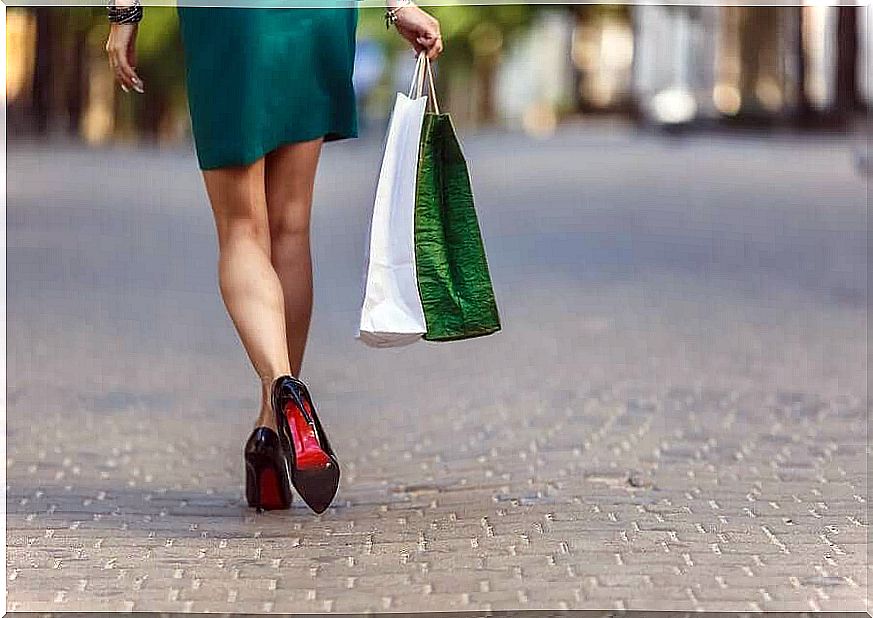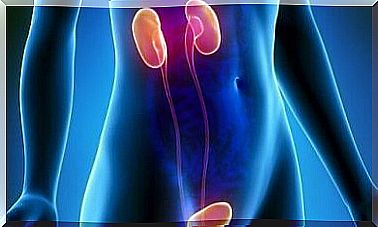4 Signs You’re Addicted To Shopping

Knowing if you are addicted to shopping is a difficult process if you don’t know enough about the disorder. In general, when there is an addiction, the patient is the last to notice the actions that result from his behavior.
Shopping addiction is the compulsive way of shopping for goods and even services. Most of the time, these are typical consumer products, which are clearly not useful and are installed as a necessity for advertising.
It’s normal that you need to shop to cover logical everyday needs. However, if you develop an addiction, you lose control of your consumption. In addition, the process can be accompanied by frustration when you don’t get what you want, and some subsequent guilt over high expenses.
Although there is talk of a current consumer society, with a tendency to spend with the superfluous, not all people are susceptible to the development of this behavior. More susceptibility has been observed among those who are more compulsive, have little tolerance for frustration, or whose self-esteem is very low.
What is the typical compulsive shopper profile?
Anyone can be addicted to shopping, although there is a profile that presents this disorder more frequently. Generally speaking, they are usually young people with easy access to the Internet.
According to global estimates in developed countries, women tend to have this problem more than men, in a high proportion. It is also noticeable that they spend more time choosing the product, without making immediate purchases of the first thing they find, which is common among men.
The age of these addicts ranges from 20 to 65 years for the most part. Elderly people, on the other hand, seem to reduce their purchasing habits and be more austere in their consumption.
The Internet has meant a shift and a resounding explosion in the phenomenon of shopping addiction. Ease of accessing online stores full of products, offers, promotions and free shipping fueled the compulsion.
Although there are shopping addicts also in physical and traditional stores, online purchase is registered as the norm for those who have this disorder. It also guarantees a certain anonymity, which avoids the embarrassment of regularly going to a place and being discovered.

Signs You Are Addicted to Shopping
There are a number of signs and behaviors that can alert you to shopping addiction. We will explain them below:
- Feeling an uncontrollable urge to shop : shopping addiction is a compulsion. The person wants to have a new product anyway, as soon as possible. This results in anxiety symptoms.
- Loss of Control: A characteristic of all addictions is the patient’s difficulty in controlling himself. One sign that you are addicted to shopping is that you can’t stop spending or exaggerate the amount of items you buy.
- Habit intrusion in everything: Another sign of addiction is that it affects many facets of the patient’s life. It is not a habit reduced to one time of the day, but it disturbs the family, work and social life.
- Feeling of frustration at not being able to shop: When you get nervous, anxious, and angry because you can’t buy what you wanted, you may be showing a sign of shopping addiction. It’s normal to be upset about not doing something you wanted to do, but if this frustration is intense and constant, then it can be pathological.
Treatments for a Shopaholic
This is an addiction and as such the treatment regimen is based on a psychological approach. The use of medications may be justified if there are very powerful signs of anxiety or depression, but they should be prescribed by a psychiatrist.
As for psychotherapy, relaxation and behavior modification techniques are preferred. The objective is to increase control over the moment and avoid situations that could favor compulsive buying.
Sometimes, through therapy, the patient comes across the source of his addiction. This requires that the affected person is aware of their disorder and learn to keep track of what they spend and the feelings that arise every time they buy.
In terms of behavior modification, the involvement of others to assist with treatment is critical. You can choose a shopper who manages the addict’s money and advises you to decide which items are considered necessary and which are superfluous.

Shopping addiction is not a joke
Although it sounds like a joke, and many are used to spending money on products that are far from being classified as necessary, you must understand that shopping is an addiction and a psychological disorder.
As such, it deserves care and specific treatment in cases that require it. The family, financial, and professional consequences of compulsion are far from negligible.








